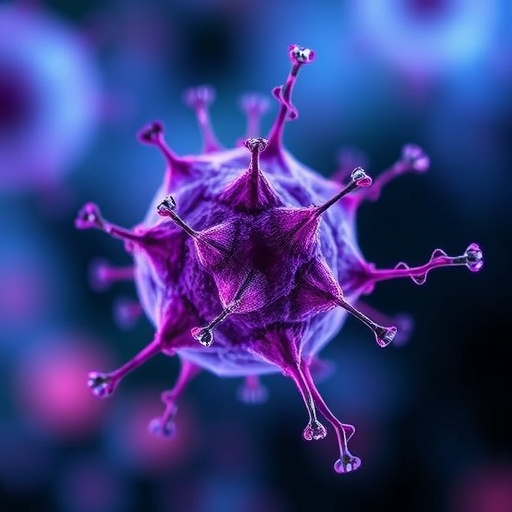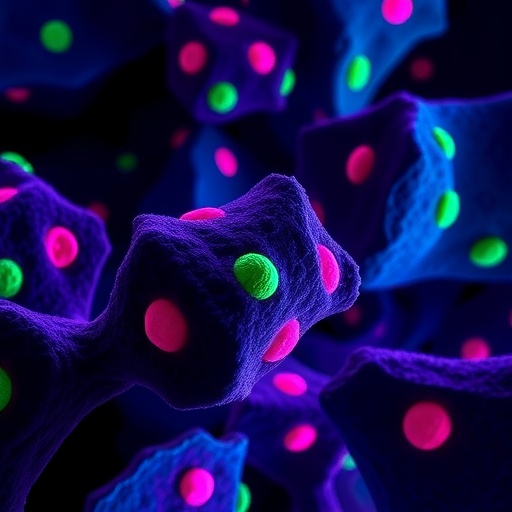In the relentless pursuit of innovative cancer therapies, the WNT signaling pathway has emerged as a pivotal molecular axis, commanding intense scientific scrutiny. This ancient and evolutionarily conserved signaling cascade plays a fundamental role in regulating cellular processes such as proliferation, differentiation, and tissue homeostasis. Yet, its dysregulation is a hallmark of oncogenesis, implicated in tumor development, metastatic progression, and therapeutic resistance across diverse cancer types. Recent comprehensive reviews published in the journal Molecular Biomedicine provide an exhaustive synthesis of the current landscape of WNT signaling in cancer biology and the burgeoning therapeutic strategies targeting this pathway.
The WNT pathway bifurcates into canonical (β-catenin-dependent) and non-canonical (β-catenin-independent) branches, each intricately orchestrating cellular fate decisions. Central to the canonical pathway is the regulation of β-catenin stability, which translocates to the nucleus upon activation to co-activate transcription factors crucial for oncogenic gene expression. Non-canonical signaling, meanwhile, modulates cytoskeletal dynamics and cell polarity, influencing tumor invasiveness and microenvironment interactions. Crosstalk between WNT signaling and other critical pathways such as Notch, Hedgehog, and TGF-β further complicates therapeutic targeting, underscoring the necessity for nuanced molecular interventions.
Cancer types including breast, colorectal, liver, glioblastoma, and prostate cancers exhibit aberrant WNT activity, albeit through distinct molecular mechanisms. For instance, mutations in components like APC, β-catenin, or RNF43 lead to constitutive activation of canonical WNT signaling in colorectal cancer, driving unchecked cell proliferation. Conversely, in glioblastoma, non-canonical pathways predominate, fostering an aggressive phenotype characterized by enhanced migratory capacity. Understanding these cancer-specific variations is critical for designing tailored therapeutic approaches.
Therapeutically, the WNT axis offers multiple “druggable” targets, from ligand production enzymes like Porcupine (PORCN) to receptor complexes comprising Frizzled (FZD) and LRP5/6, along with downstream effectors such as Dishevelled (DVL) and Tankyrase (TNKS). The development of Porcupine inhibitors, which impede WNT ligand secretion, has shown promise in reducing tumor growth in preclinical models. Similarly, antagonists against FZD receptors and monoclonal antibodies targeting WNT ligands or their co-receptors have entered clinical trials with variable success.
However, the therapeutic exploitation of WNT signaling is profoundly challenged by “on-target” toxicities. WNT signaling’s role in normal tissue maintenance, particularly in bone homeostasis and gastrointestinal epithelium renewal, means its inhibition can precipitate severe adverse effects, including osteopenia and intestinal dysfunction. These toxicities pose substantial barriers to the clinical adoption of WNT pathway inhibitors, necessitating a delicate balance between anti-tumor efficacy and preservation of physiological functions.
To circumvent these challenges, emerging strategies focus on enhancing drug specificity and delivery. Advances in biomarker discovery enable the identification of patient subsets most likely to benefit from WNT-targeted therapies, thereby personalizing treatment. Moreover, combination regimens that integrate WNT inhibitors with immune checkpoint blockade or chemotherapeutic agents hold potential to amplify anti-cancer responses while mitigating individual drug toxicities.
The intricate regulation of WNT signaling is further complicated by the β-catenin/TCF transcriptional complex and its interaction with co-factors such as CREB-binding protein (CBP). Pharmacologic disruption of these protein-protein interactions represents a promising approach, aiming to selectively inhibit oncogenic transcriptional programs while sparing normal cellular signaling. Small molecule CBP inhibitors are currently undergoing evaluation for their efficacy and safety profiles.
Non-canonical WNT pathway components also present unique therapeutic opportunities. Modulating intracellular kinases like casein kinase 1 (CK1) or components involved in cytoskeletal rearrangement may attenuate metastatic potential without substantially affecting β-catenin-driven transcription in normal tissues. These approaches could offer safer yet effective avenues for blocking WNT-driven tumor progression.
The review also emphasizes the importance of understanding the tumor microenvironment’s contribution to WNT signaling dynamics. Tumor-associated stromal cells, immune infiltrates, and extracellular matrix components can modulate WNT pathway activity, influencing therapeutic responsiveness. Hence, future research must integrate microenvironmental cues to refine therapeutic designs further.
Leveraging high-throughput screening and omics technologies, researchers are mapping the complex networks of WNT-related molecular interactions, enabling rational design of next-generation inhibitors. These inhibitors may possess improved pharmacokinetic properties, enhanced tumor selectivity, and lower propensity for resistance development.
In conclusion, while significant hurdles remain, the growing elucidation of WNT signaling’s multifaceted roles in cancer provides a promising framework for innovative therapies. By integrating molecular biology, pharmacology, and clinical sciences, the field is poised to deliver targeted anti-cancer strategies that harness WNT signaling’s oncogenic potential while minimizing collateral tissue damage. The ongoing evolution of this avenue holds transformative promise for cancer patients worldwide.
Subject of Research: WNT signaling pathway in cancer and therapeutic targeting strategies.
Article Title: WNT signaling in cancer: molecular mechanisms and potential therapies.
News Publication Date: 22-Oct-2025
Web References: DOI: 10.1186/s43556-025-00327-x
Image Credits: Jing Li
Keywords: WNT signaling, cancer therapy, Porcupine inhibitors, β-catenin, Frizzled receptors, Tankyrase inhibitors, molecular oncology, pathway targeting, drug toxicity, tumor microenvironment, signal transduction, precision medicine
Tags: cancer types with aberrant WNT activitycanonical and non-canonical WNT branchescomprehensive review of WNT signaling in oncologycrosstalk between WNT and Notch pathwaysinnovative cancer therapy strategiesmolecular mechanisms of WNT dysregulationoncogenesis and WNT pathwayrole of β-catenin in cancertargeted therapies for WNT-related cancerstherapeutic resistance in cancer treatmenttumor microenvironment and WNT signalingWnt signaling pathway in cancer





